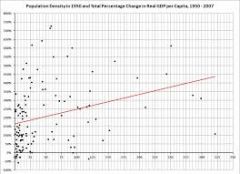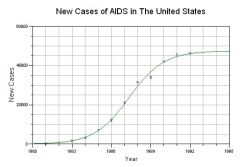![]()
![]()
![]()
Use LEFT and RIGHT arrow keys to navigate between flashcards;
Use UP and DOWN arrow keys to flip the card;
H to show hint;
A reads text to speech;
51 Cards in this Set
- Front
- Back
|
Biotic
|
Living
|
|
|
Abiotic
|
Non-living
|
|
|
Niche
|
Orgranism's role & position in their enviroment.
(* Of it's way of life & how it fits into its given ecsosytems.*) |
|
|
Symbiosis
|
When orgranisms live together & interact reguarly with one another
Ex. Mutalism, Parsitism, Commensalism |
|
|
Mutalism
|
Both Species involved benefit
Ex. Ants, Acacia Trees Egyptian plovers & crocodiles |
|
|
Parasitism
|
One species benefits, other is harmed.
Ex. Tapeworm, Ticks, guinea worms, & oranisms that cause malaria. *The host is Harmed and parasite Benefits!* |
|
|
Commensalism
|
One species benefits other is unaffected.
(People debate about this: Some scientists believe commensalism is early mutalism; relationship not completely understood. |
|
|
MUTALISM
|
+ +
|
|
|
PARASITISM
|
+ -
|
|
|
COMMENSALISM
|
+ O
|
|
|
Behaviors
|
Way an organism reacts to change in its internal condition or external enviroment
*Response to Stimuli* |
|
|
Innate behsvior
|
Inborn Behavior fully functional the first time they are performed.
(instinct: natural individual can be a synonym.) |
|
|
Learned Behavior
|
Behavior as a result of experience
(Ex: Primates using tools) |
|
|
Courtship Behavior
|
strategies to attract a mate
Ex: Peacock trying to attract a swan |
|
|
Fight or flight
|
Response to stress prepares organisms to react/retreat adrenalines
Ex. (you cant control) Get into orretreat out of a situation (Ex. Freeze) |
|
|
Territorality
|
occupting and protecting a specific area
Ex. To protect their resource |
|
|
Agression
|
Threatening behavior to gain control. Can be defense behavior too
Ex. Looking bigger. barking o making extreme sound, teeth, Physical moves |
|
|
Dominance Hiearchy
|
Social structure: ranking individual based on position in group' pecking order.
Ex. Social Structure: Survial, injuries, makes you afficent. |
|
|
Circadian Rhythm
|
Daily/nightly behavior pattern
Ex. Internal wake&sleep its makes them b=determine your behaviors. Human don't follow their pattern |
|
|
Migration
|
Movements from place to place
Ex. Always many reasons Ex. Shelter, food, habitat |
|
|
Parental Care
|
Caring for offspring food shelter nuturing etc.
Ex. Increase survial protection |
|
|
Hibernation
|
Dormancy during winter conserve energy
Ex. Low energy state |
|
|
Estivation
|
Reduced activity during summer avoid intense heat
Ex. Reptile, mouse, same as hibernation but opposite avoid during summer same reduce activity as hibernation |
|
|
Pheromones
|
chemical signals for communication
Ex. bees, dogs, females: mentistructal cycles sink together, Working for reproduction. |
|
|
Sound signals
|
Vocal signal for communication
Ex. Dolphins, whales, bat, different animals communicate with each other. |
|
|
Language
|
Complex! Combination of sounds, symbols, or gestures bases on roles for order and meaning
|
|
|
Imprinting
|
Innate & learned young instinctnally follow the first object the see/smell
|
|
|
Habituation
|
Decrease or stop a response to a stimuli
Ex. Something you feel threaten 1. react 2. Then turn it out |
|
|
Operant conditioning
|
Learning behavior through practice/ reptition for reward/ punishment training
Ex. Learning a behavior thorugh |
|
|
Classical Conditioning
|
Mental connection between stimulus and Reward/Punishment
Ex. Same as operant mental connection. |
|
|
Taxes/Taxis
|
Movements in response to stimulus
Ex. Photo/Chemo Photo: +: too - : Away Chemo: + : Away - : too |
|
|
Kinesis
|
Undirect movement
(paramecium) Ex. Movement not move to stimulus, organism in kinesis used chance for survival. |
|
|
Population Dynamics
|
Population often change size over time
Ex. Some increase in sie , others decrease (Predator-prey) (Disease) (Death) |
|
|
Population density
|

# of individuals per unit area
|
|
|
Exponential Growth
|
when the number of organisms grows by constanly increasing rate
Ideal situation with unlimited resources (Not permited) Results ina population |
|
|
R-selected
|
Organism that grow out of control exponentially
|
|
|
Logistic growth
|

A population groeth slows or stops following a period of exponential growth
Ex. Carrying Capacity |
|
|
Carrying Capacity
|
The number of organisms of one species that a habitat or environment can hold.
Ex. Once carrying capacity (K) is reached the population maintain at gthe size (K-selected) |
|
|
K-Selected Organism
|
Big
Usually mammals (parental care) Larger life span Stable environment Ex. Humans, bears, elephants |
|
|
R-Selected Organisms
|
Small bodies
Often insects Short life span Mature early, lot of offspring Ex. Mosquitoes, bacteria |
|
|
Limiting Factors
|
Any factors that limits the population
Ex. A predators such as is a limiting factor for a prey such as a hare. Limitng can be abiotic and biotic |
|
|
denisty dependant factors
|
Factors that limits the size of a population and onl exist population gets too high
Ex. Disease competition parasites limited amount of food. |
|
|
Predation
|
One animal constantly consuming another limits population size
|
|
|
Competition
|
Individuals competting for limiting food source
|
|
|
Crowing and Stress
|
fighting
infertility decreased parent care decreased immunity to disease death |
|
|
Parasitism/ Disease
|
Parasite limtis the growth ofpopulation by causing diseases.
|
|
|
Denisity Independant factors
|
limiting factors would affect all population regardless of size
Most abiotic factors Ex. Floods, hurricanes, droughts, tornadoes, destructions |
|
|
Demography
|
the study of human population growth characteristics.
|
|
|
Demographic transition
|
a dramatic change in birth and death rates
|
|
|
birth rates
|
number of babies that were born in the past years
|
|
|
Death rate
|
number of people who ded in the past year.
|

